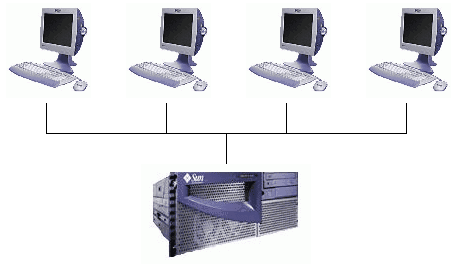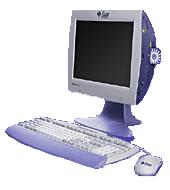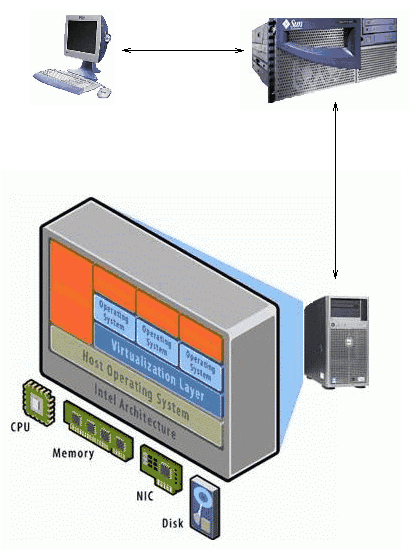Sunray Services
What are Sunrays ?
|
Sunrays are thin clients which boot from a Unix server. They have no
CPU, harddisk or memory. You can almost think of them as a keyboard /
display connected to a Unix server via a very long network cable.
When a Sunray thin client is powered on, it connects to its sunray
server. From this point on, whatever the user types goes to the
sunray server, whatever is displayed on the screen is in fact a
virtual video card inside the sunray server. Thus, there may be
many sunray terminals, all connecting and running off a single
sunray server.

|

|
Why are Sunrays used in BII ?
Since sunrays have no harddisk (or OS), they require (almost) zero setup
and deployment time and effort. They are also easily moved around. All
we need to do is to maintain 1 sunray server instead of having to worry
about individual PCs. This means that, if we install a piece of software
on the sunray server, all sunray clients can make use of it immediately.
Also, all user home directories are on the sunray server. One backup
takes care of everybody's files. Since sunrays run on a unix (Solaris)
environment, there is essential zero virus threat.
Is the Sunray environment suitable for me ?
Firstly, since the sunray server is a Solaris machine, your software
needs to run on Solaris. Since the sunray does not have high-end graphics
capabilities, any form of 3-D modelling software will probably run slow.
Normal 2-D graphics performance is not a problem (web browser, image
editing, software development, etc). In addition, since all sunray
users share the resources of a single sunray server, it is best not to
run compute or memory intensive jobs on the sunray server. Another
concern will be the use of USB devices, currently we do not provide
USB connectivity on the Sunrays. If you need to transfer files, please
use ftp or scp as USB thumb drives will not work.
I need to run XYZ software, and it only runs on Windows.
|
In order to run Windows applications on a sunray, we need to
provide a Windows OS. We use VMWare to run a Windows OS inside
a Linux server. This means that a single Linux server can
emulate several PCs which in turn run several instances of
Windows. In practise, a sunray user is connected to a sunray
server. From the sunray server (Solaris cannot run VMWare),
the user connects to a Linux server which runs VMWare. A
copy of Windows runs inside an emulated PC. The end result is
the user sees a Windows desktop from the sunray terminal.
From an administrative standpoint, we can "clone" many Windows
PCs easily. This provides a "standard PC" for sunray users.
Unfortunately, since the PC hardware is emulated, you cannot
expect blazing performance here. However, if you are not running
anything particularly resource hungry, you should find the
responsiveness satisfactory for common jobs like MS Office, etc.
|

|


